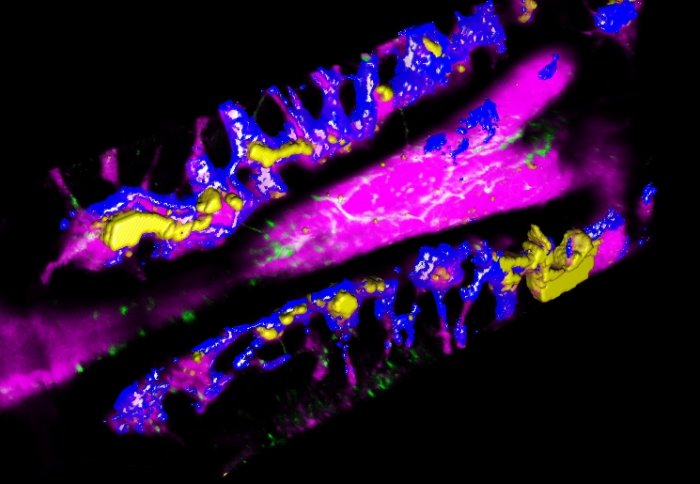Tracking leukaemia-resistant cells
Interview with
Leukaemia is a cancer of the blood and it's also the most common form of cancer in children. But like all cancers, leukaemic cells can become resistant to the chemotherapy used to control them. And scientists had thought that one of the ways that cells become resistant is by hiding themselves away in the recesses the the bone marrow and going into a state of suspended animation, placing them beyond the reach of a drug attack. Now Cristina Lo Celso has discovered that these cells are actually high active and mobile, as she explained to Kerstin Goepfrich, beginning with why chemotherapy doesn't always work...
in children. But like all cancers, leukaemic cells can become resistant to the chemotherapy used to control them. And scientists had thought that one of the ways that cells become resistant is by hiding themselves away in the recesses the the bone marrow and going into a state of suspended animation, placing them beyond the reach of a drug attack. Now Cristina Lo Celso has discovered that these cells are actually high active and mobile, as she explained to Kerstin Goepfrich, beginning with why chemotherapy doesn't always work...
Cristina - It actually works pretty well and it really gets rid of the bulk of leukaemia. We could see mice completely riddled with disease and in a few days of chemotherapy we could see just very, very few cells left. Now these very, very few cells left are really the problem be cause these are the cells that are able to regenerate the disease. And because these cells are chemo-resistant, it means that when a patient comes back to the clinic with a relapse it is much, much harder to treat.
Kerstin - Scientists had always thought that some leukaemia cells were resistant to chemo because they went into hiding, possibly seeking refuge from their destroyer in the bone marrow, but when Cristina started watching these cells she found quite the opposite...
Cristina - And that was that these cells don't hide and rather they run through the bone marrow, fairly constantly, so it really was very surprising and, especially, it is making us think about leukaemia in a very different way. And it is making us think about completely different approaches to tackle leukaemia survival.
Kerstin - So how did you find out that there are these runner cells that run really fast after you treated leukaemia with chemotherapy?
Cristina - What we did was to work with a specific type of microscopy that we have developed over the years that allows us to see live cells inside the marrow of live, anesthetised mice, and we have single cell resolution which is for live imaging through bone, it's really quite an achievement. And, because we can see single cells, we can really see those very, very few cells that are able to survive chemotherapy and not only can we see them but we can follow them over time. So sometimes we followed them for up 14 hours - that was a long, long night in the lab. But that really gave us an idea of how these cells behave over time.
Kerstin - But how about leukaemia in patients - how is that related to what happens in a human being?
Cristina - So this was a very important question for us and we wondered whether also the human cells would migrate - that they would move. So what we did was to work with some specific mutant mice, which are very heavily immunocompromised and we can inject human cells into these mice. Because the mice don't have a good immune system they will not reject the human cells and the human cells can develop into the leukaemia in the same way as they develop in the patient. And so, in order to identify the human cells, we injected antibodies that recognised human cells as opposed to mice. And these antibodies were fluorescent so they would glow in the dark and they would tell us exactly where the human cells were, and we followed them over time and we saw that they were moving in the same way.
Kerstin - Sounds like it is time to run after the running cells. Do you have any idea how to do this?
Cristina - Absolutely! It's definitely time to run after the runners. So we know that there are a number of genes that are important in regulating the movement of cells and over the years cell biologists have developed a number of inhibitors, which means the number of drugs that can be used to interfere with these motors. And so what we are planning on doing now is to start off from already existing drugs and see if we can apply them to improve the treatment of leukaemia, at least in the murine models that we have available within the laboratory.
Kerstin - Sort of like sleeping pills for cancer cells?
Cristina - Yes, or making them lazy.
Kerstin - Wow that exciting! So what's next in the future?
Cristina - We have been able to collaborate with a number of clinicians and these are fantastic links that we hope we'll be able to do a lot more work together in the future. So we are definitely going to be busy in the next few years.










Comments
Add a comment